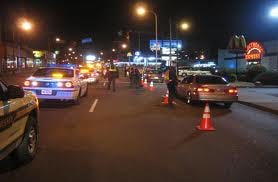Police are using checkpoints to take pictures of drivers & passengers.

For more than a year now, San Juan Police Chief Juan Gonzalez said his department has conducted checkpoints at certain locations in direct response to crimes investigators believe are gang-related. The criminal element — such as the Texas Chicano Brotherhood that rivals the older Tri-City Bombers gang, the Po’Boys and the Vallucos — has long plagued the Pharr, San Juan and Alamo area.
At a San Juan checkpoint, most cars attempting to pass through are stopped. Passengers are questioned and, in certain instances, individuals are asked by investigators to voluntarily submit to having photographs taken of their gang-affiliated tattoos. The information is then vetted for inclusion in a state database.
In Texas, police are prohibited from conducting roadblocks to check for drivers under the influence. However, city police sometimes perform checks for insurance, seatbelts and driver’s licenses in places like Corpus Christi, for example.(Any excuse to violate our rights)
In San Juan, the purpose of the checkpoints is two-fold: checking for those types of violations and gathering intelligence to enter into GangScope (gang intelligence database).
http://www.themonitor.com/news/local/article_f3bdfdf4-5216-11e2-bce5-0019bb30f31a.html
You can bet the database is being used by the FBI and other agencies. Many people haven't even heard of the FBI's Biometric Center of Excellence (BCOE).
The BCOE (located in Clarksburg, W. Va.) is the FBI’s program for exploring and advancing the use of new and enhanced biometric technologies and capabilities for integration into operations. The FBI’s Science and Technology Branch created the BCOE in 2007 to support its overall biometrics mission, and the BCOE supports major programs and strategic initiatives that comprise the FBI biometric portfolio of services.
The BCOE focuses its efforts on fostering collaboration, improving information sharing, and advancing the adoption of optimal biometric and identity management solutions within the FBI and across the law enforcement and national security communities.
http://www.biometriccoe.gov/
RFI: Tattoo/Symbol Image Database
http://www.biometriccoe.gov/_doc/RFI.TattooSymbolDatabase.pdf
U.S. Govt Facial Recognition Legal Serieshttps://www.fbibiospecs.org/FacialRecogForum/
RFI: Contactless Friction Ridge Capture Devices
http://www.biometriccoe.gov/_doc/RFI.ContactlessFingerprintCaptureDevices.pdf
U.S. Govt Interagency Symposium for Investigatory Voice Biometrics: Interoperability Committee Report, Version 1.0 http://www.biometriccoe.gov/_doc/Interoperability_Committee_Report_FBI-VBS_Final_for_internet12202011.pdf
U.S. Govt Interagency Symposium for Investigatory Voice Biometrics: Use Case Committee Report, Version 1.0 http://www.biometriccoe.gov/_doc/Use-Case_Committee_Report_FBI-VBS_Final_for_internet12202011.pdf
RFI: Biometric Multi-Modal fusion Study
http://www.biometriccoe.gov/_doc/RFI.MultiModal.pdf
BIOMETRICS: A DECADE of PROGRESS since 9/11
http://www.biometriccoe.gov/Resources/Online_Library.htm#Decade911
The National Biometrics Challenge, September 2011
http://www.biometriccoe.gov/_doc/BiometricsChallenge2011_protected.pdf
Electronic Biometric Transmission Specification (EBTS), Version 9.3
https://www.fbibiospecs.org/ebts.html
National Institute of Standards and Technology: Steering Committee Report, Version 0.1
http://www.biometriccoe.gov/_doc/Steering_Committe_Report_022411_Final_for_internet12202011.pdf


